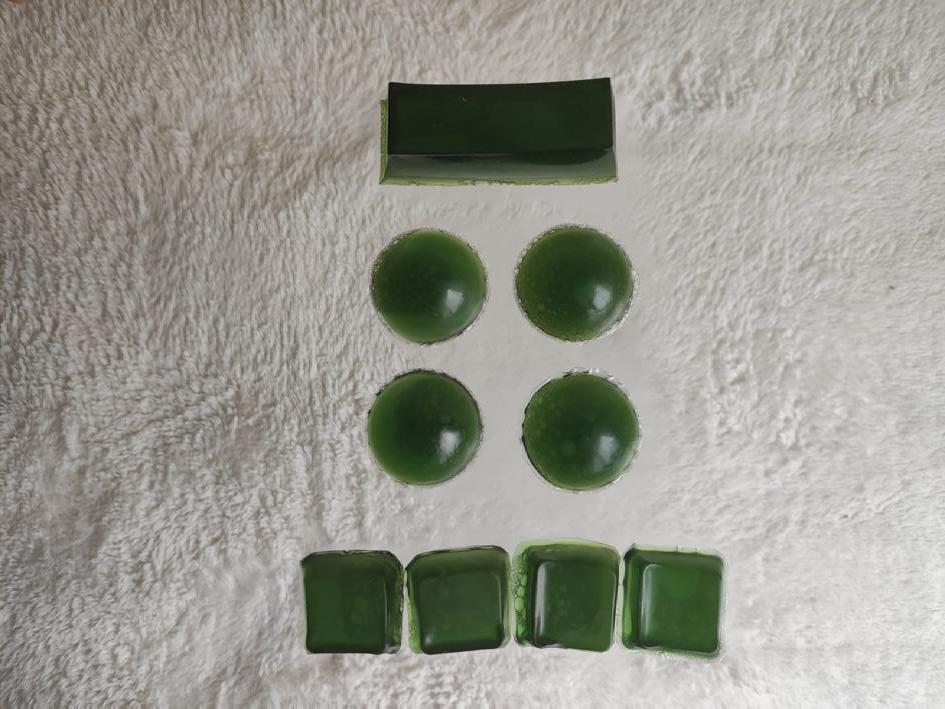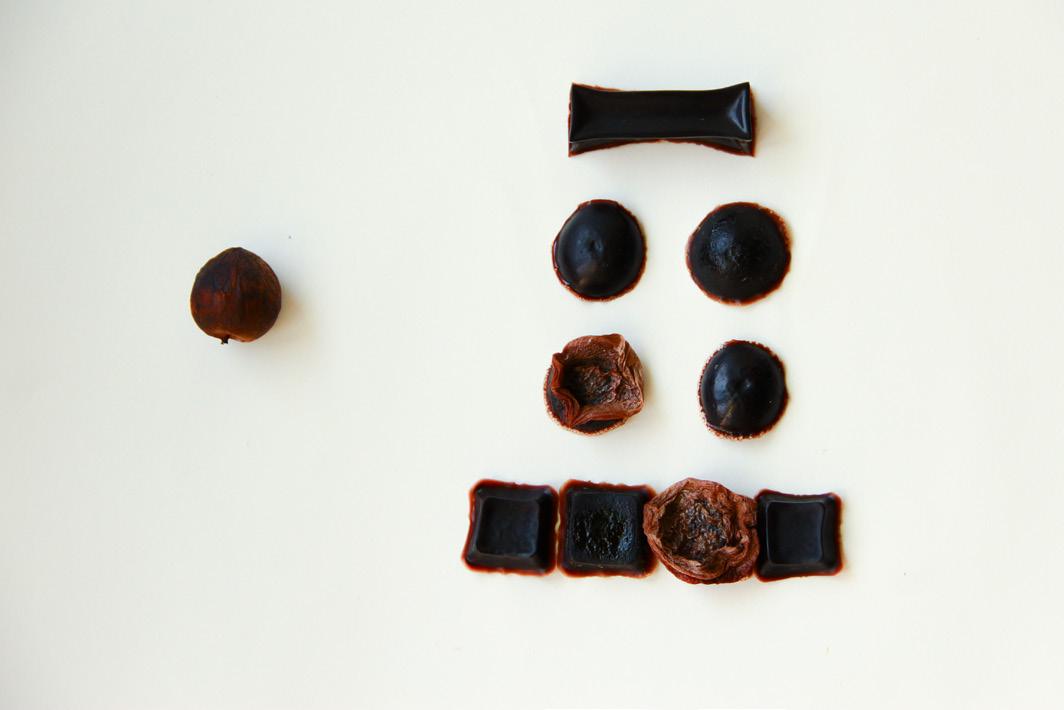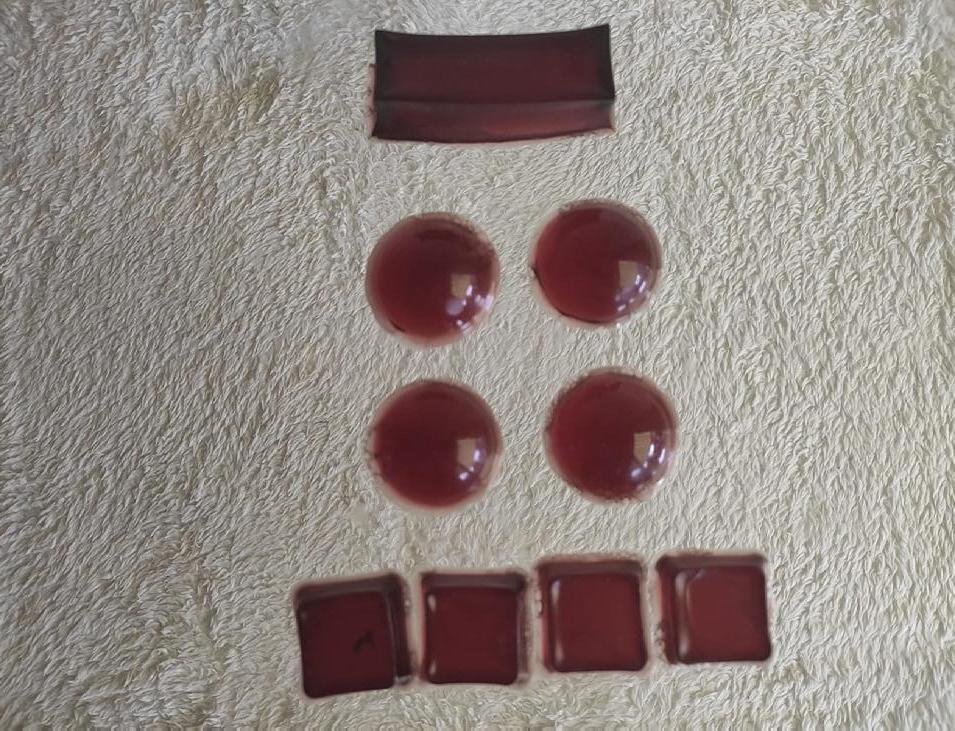
2 minute read
Interviews
Boiling Red Cabbage for 10 min. with Baking Soda. Result after 3 days (left) and 2 weeks (right) - Desiree van Dam

Advertisement
Boiling 8 avocado-pits with Cristal Soda. Result after 1 day (left) and 2 weeks (right) - Desiree van Dam




Boiling Red Cabbage with Vinegar. Result after 1 day (left) and 2 weeks (right) - Desiree van Dam


The first interview was with Elisa van de Burg, who just finished the study Product Design and is starting in September as a technician at a makerspace in Enschede. She also followed the Minor Makerslab and in that time she experimented with bioplastic, colors and recipes and made a bag out of bioplastic. During her graduation project she also worked a lot with colors, and she knows a little bit about product processing. She talked about plastic waste and came to the conclusion that it’s a good idea to look at other options like bioplastic. Color plays a part in this, because the natural color of gelatine bioplastic is yellow and that’s not always a complementing color. There are lots of ways to color bioplastic but not all are good for the environment. Also, when you dispose of it, because natural ingredients can harm the environment when the product needs to be broken down. It’s important to think about this when making bioplastic.
The second interview was with Laura Mudde, who works in the field of art, does social innovation development projects in society with partners and artists, and she’s also a teacher. Right now, she is mostly interested in what art can do to cause social change. We talked about that it’s important that something is made out of bioplastic, because of the climate crisis. Colors also play a part in this because it increases the possibility that people will actually use bioplastics as an alternative. Using synthetic pigment for that could be bad for the environment when it gets broken down in nature. That’s why natural pigments are important. For artists who are just getting started to work with bioplastics it’s nice that the materials used for coloring the bioplastic are accessible and affordable.





